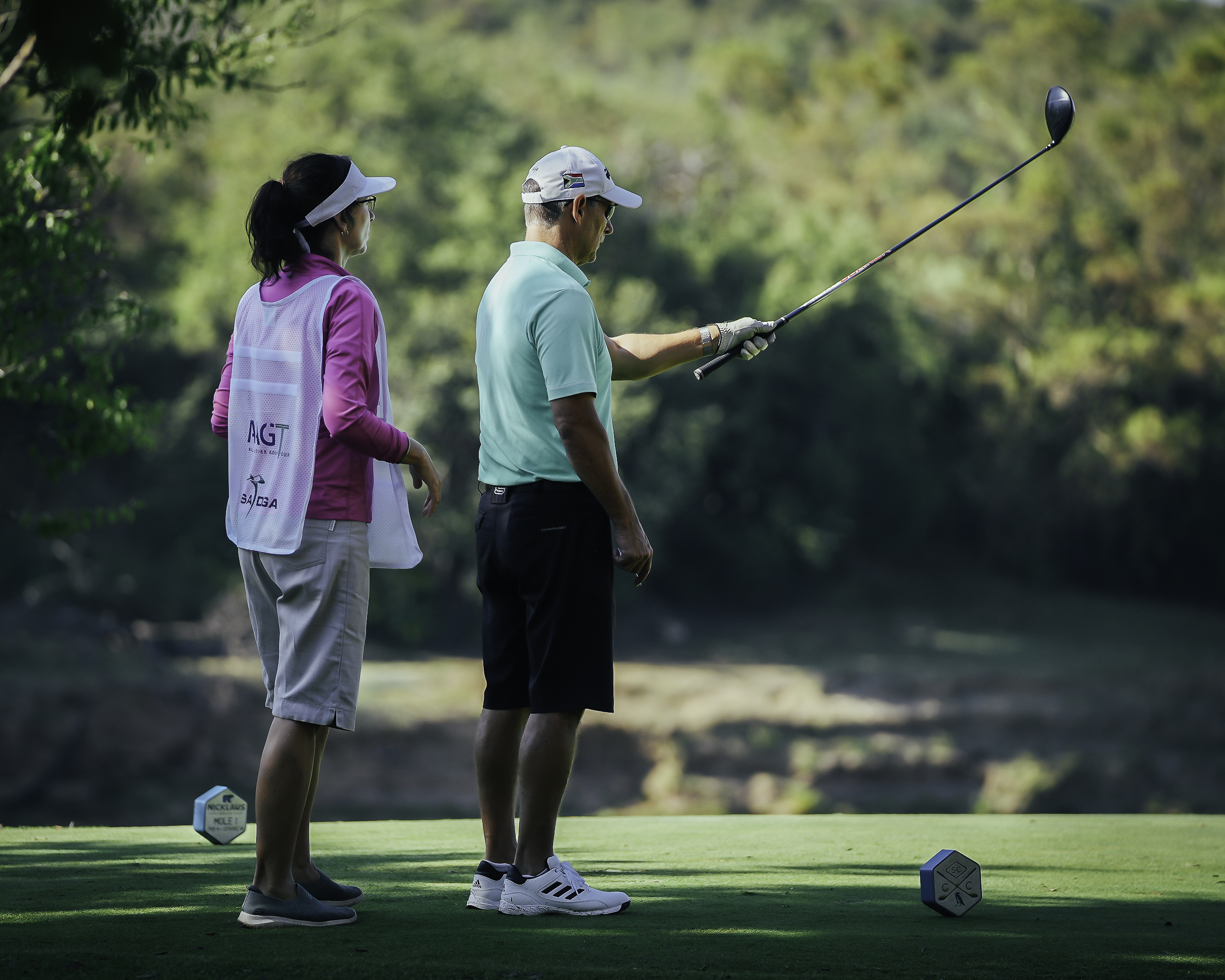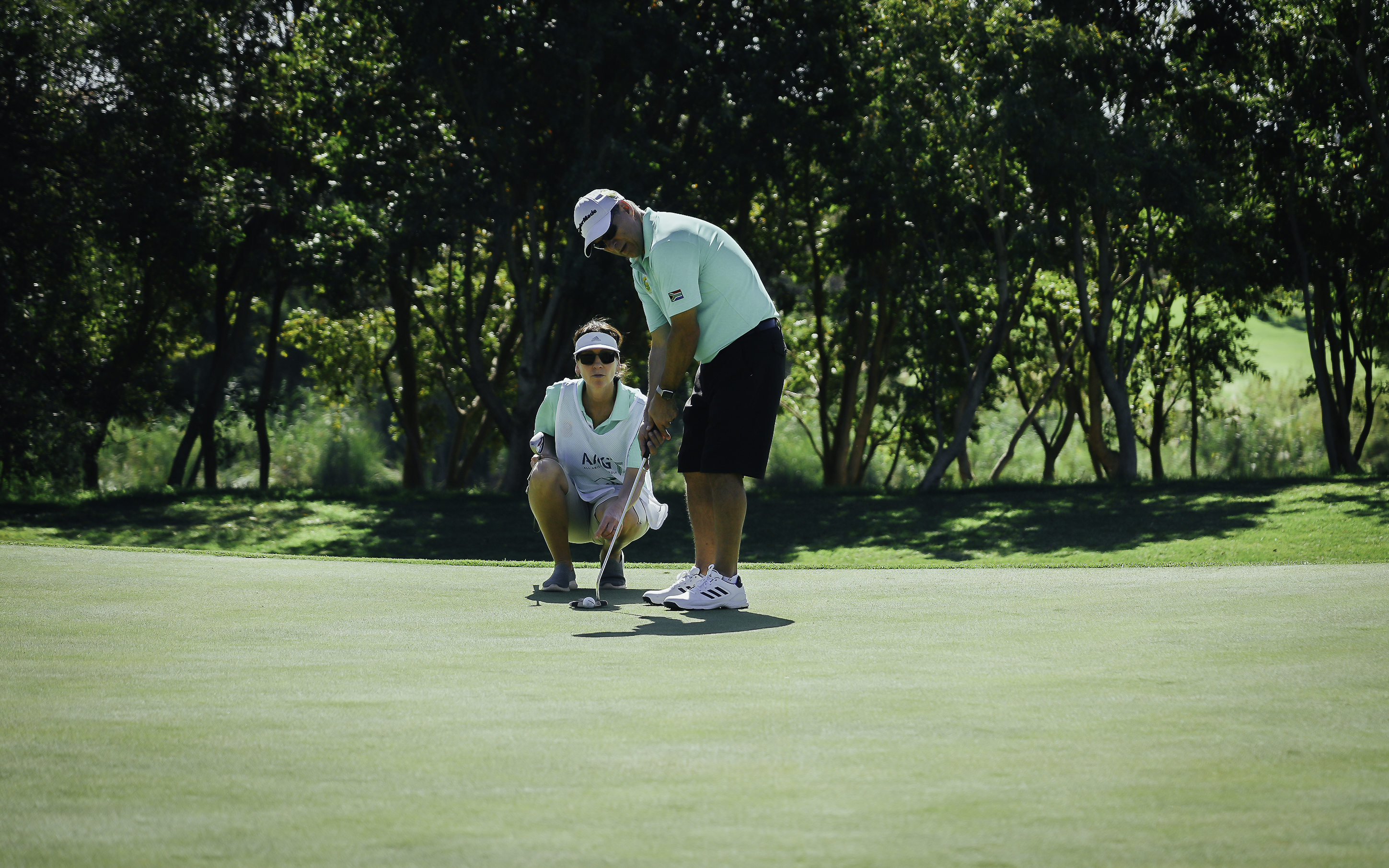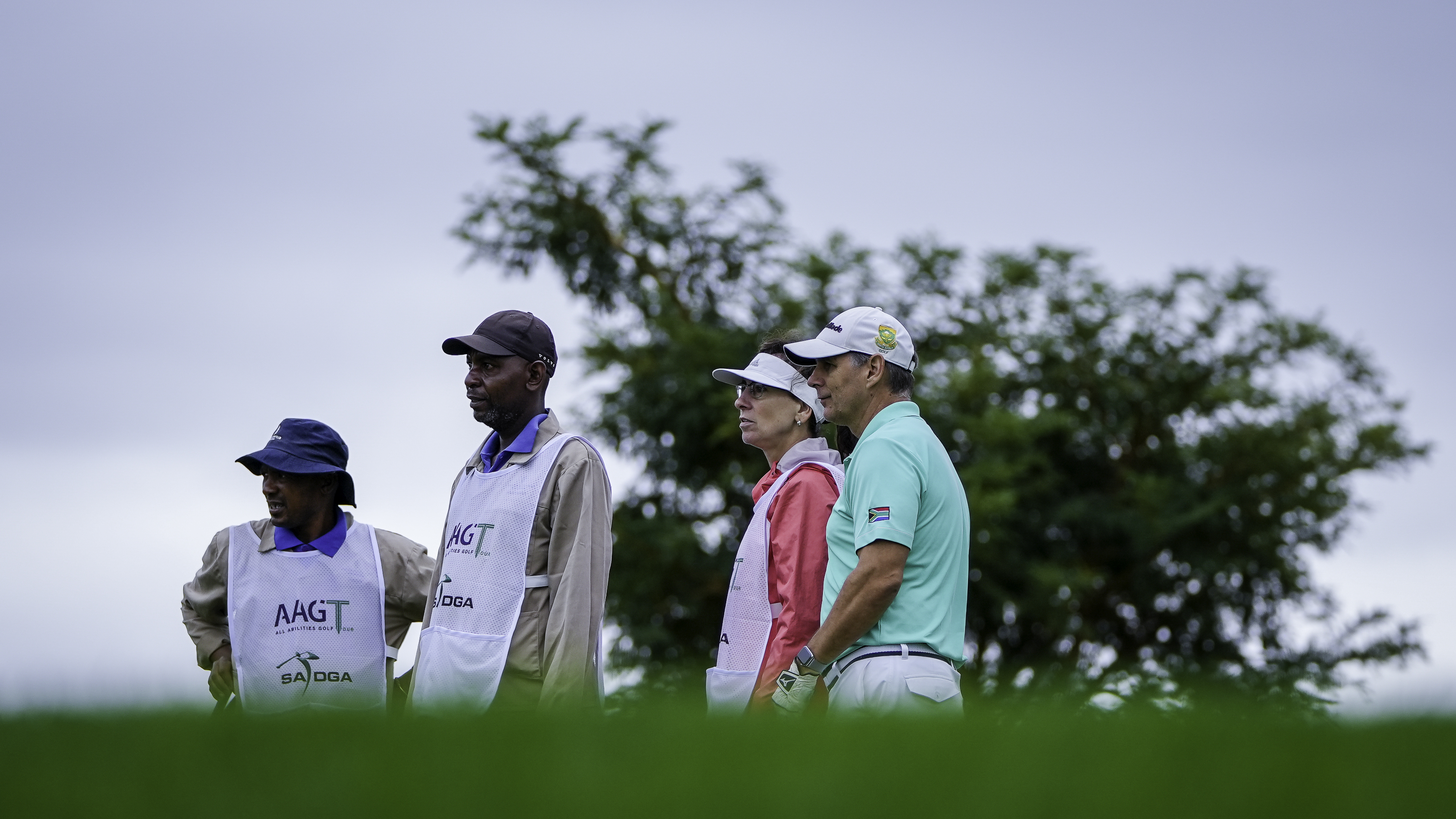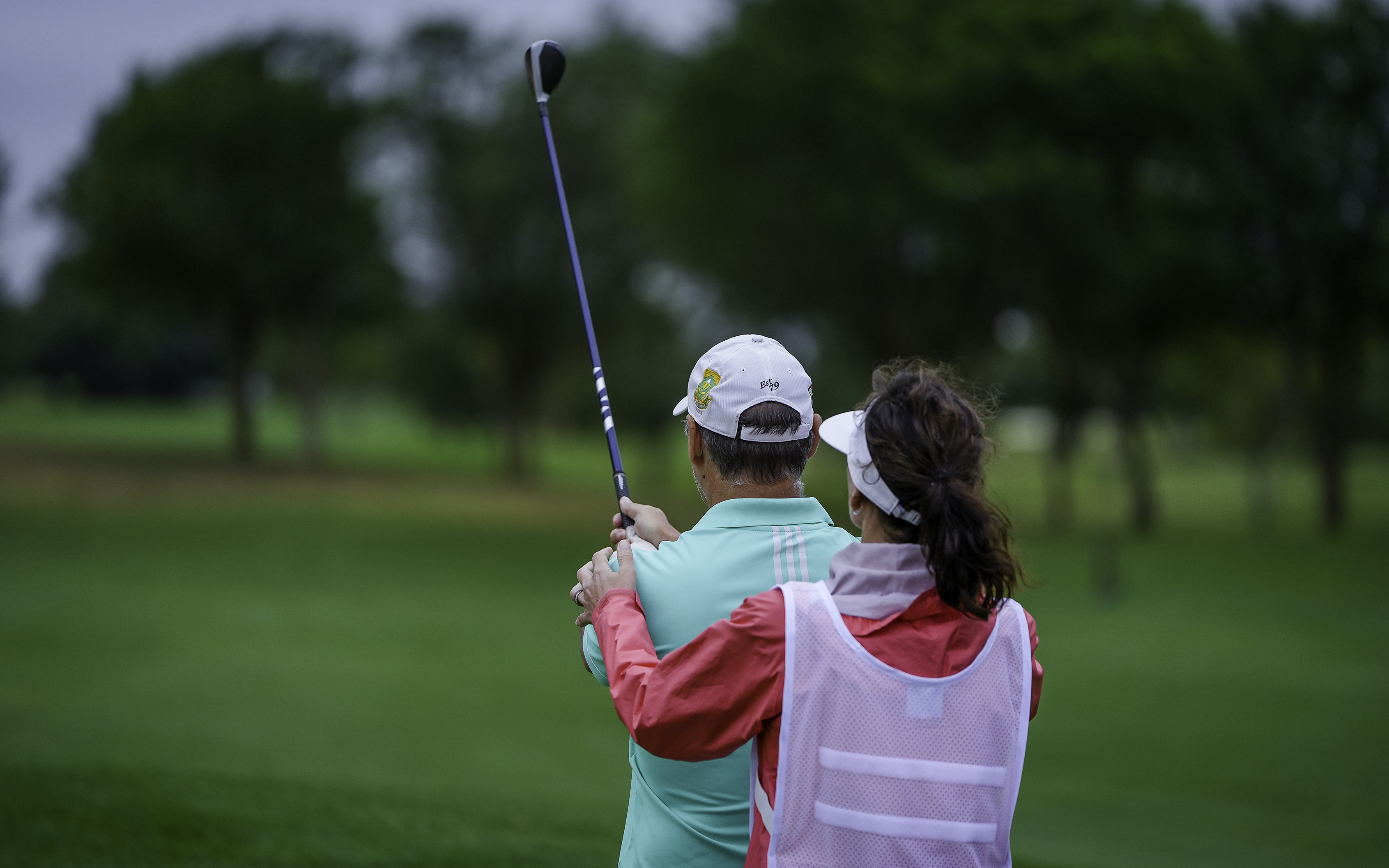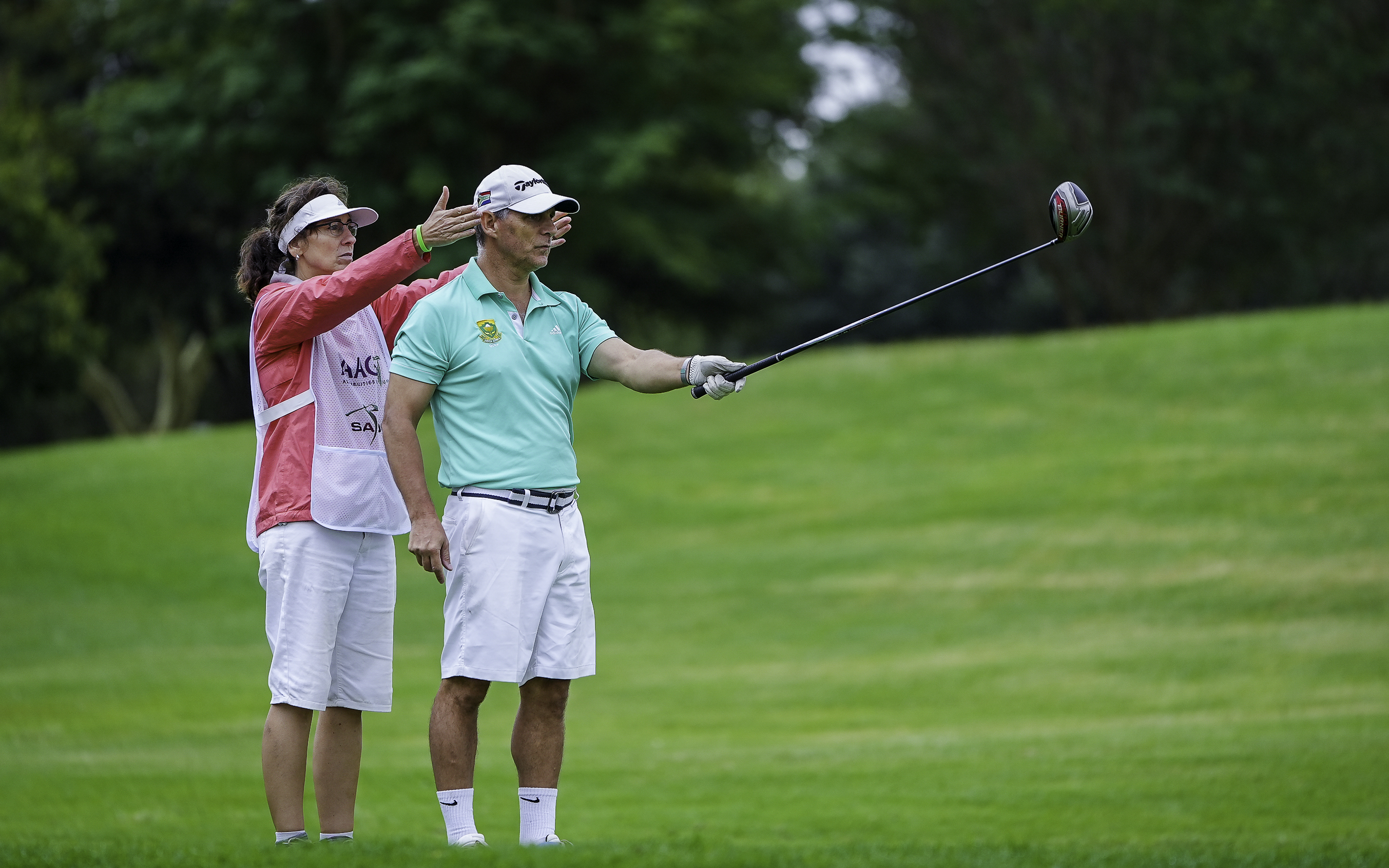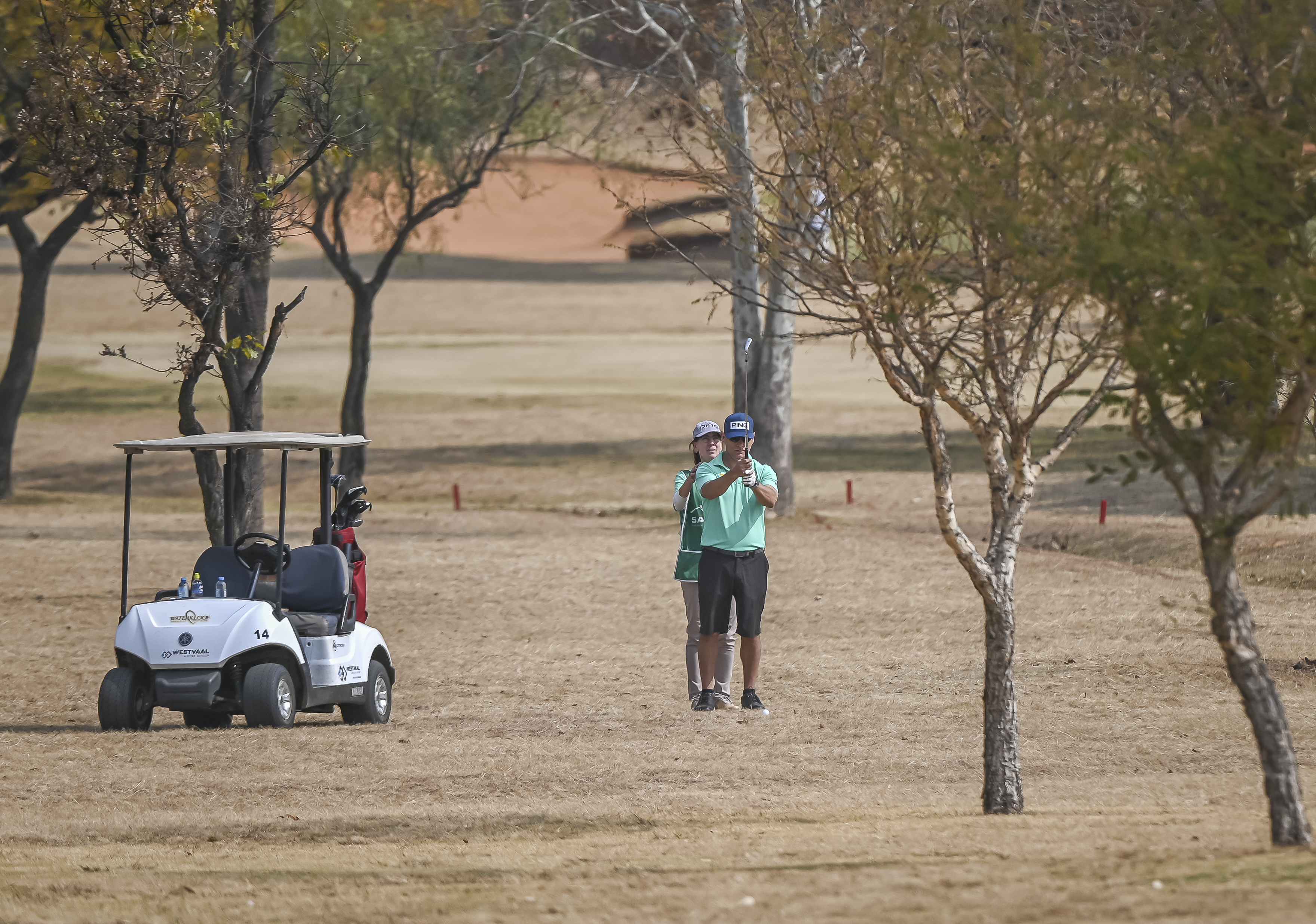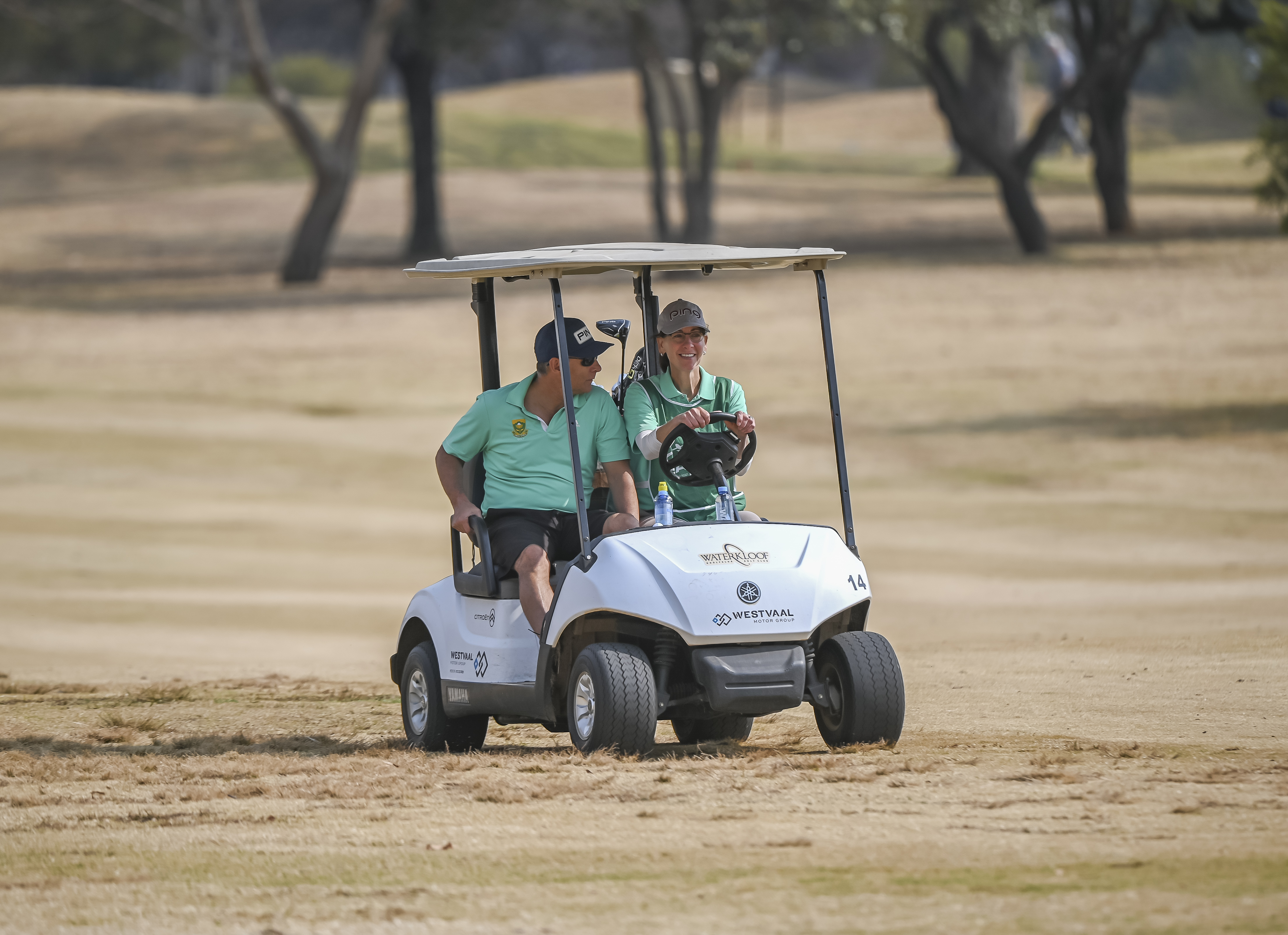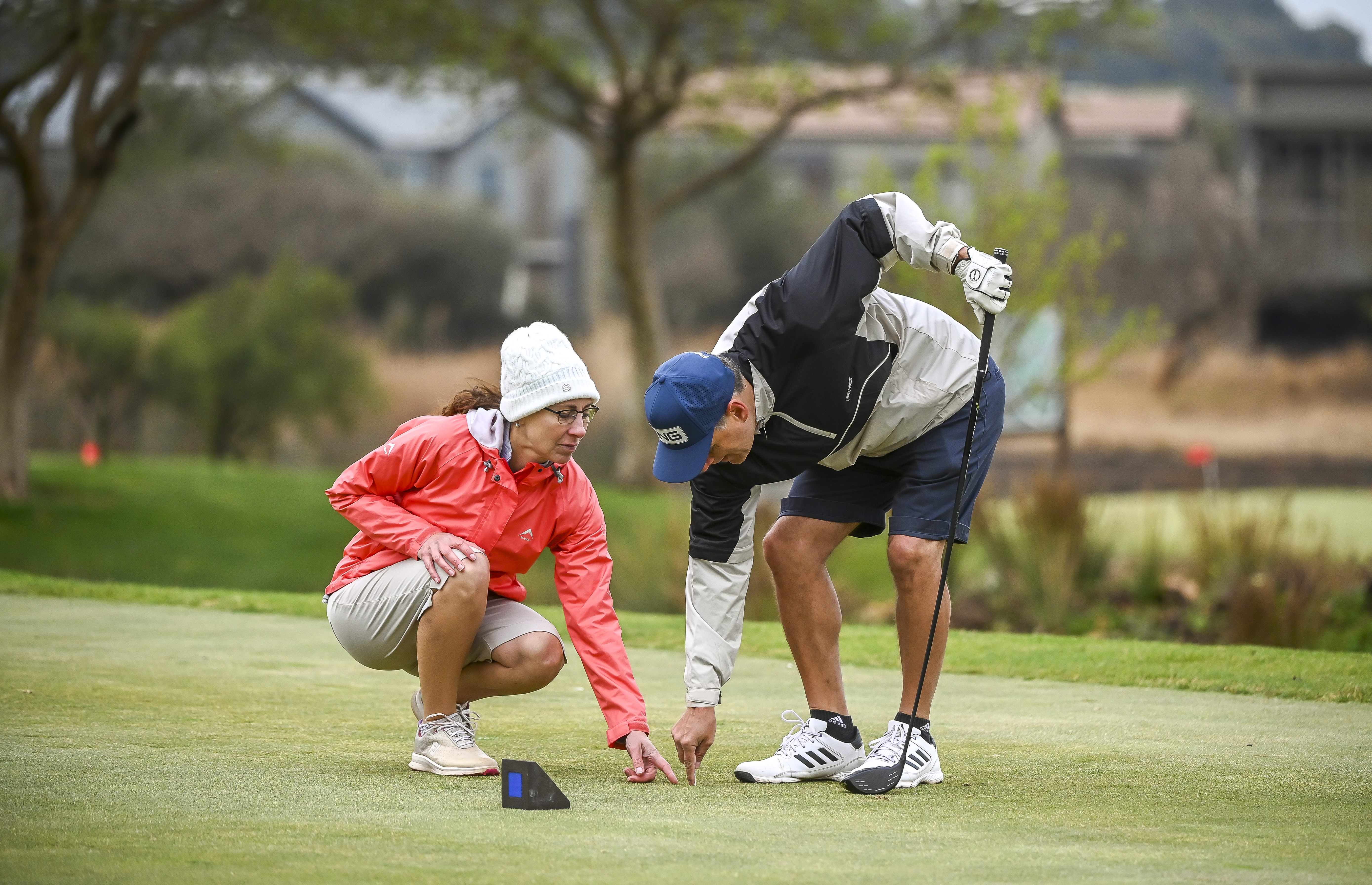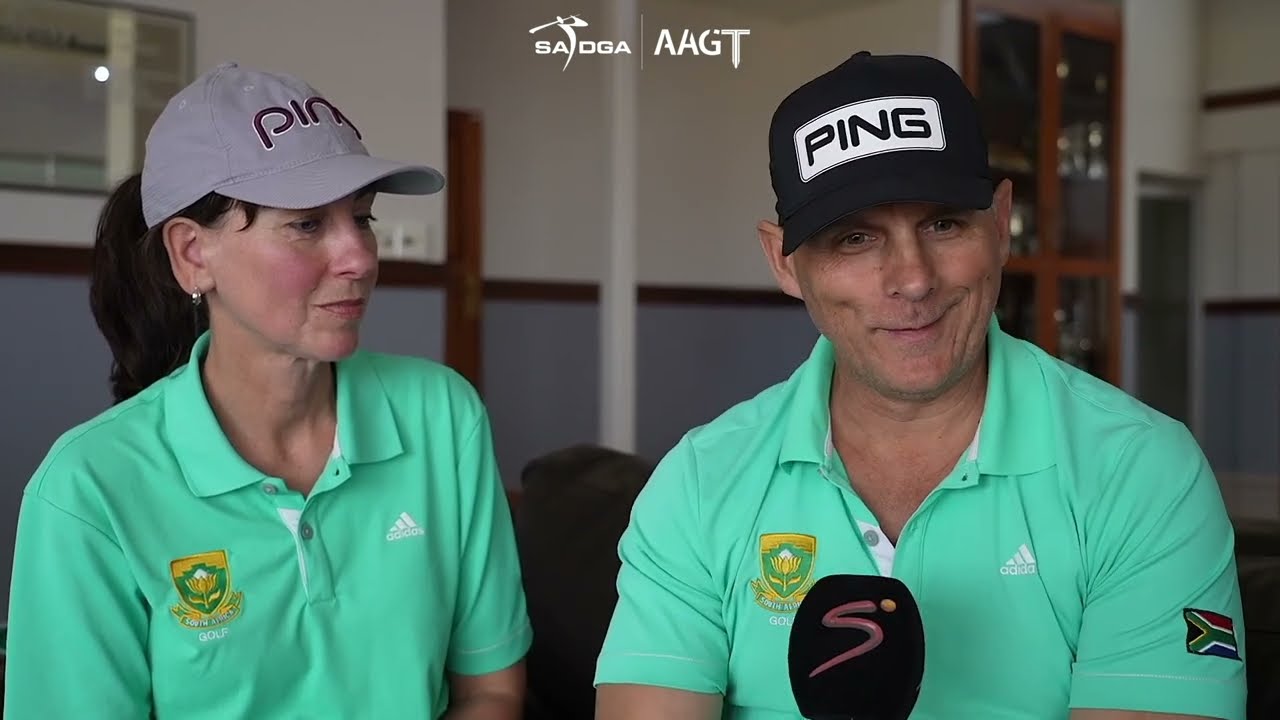
SCROLL DOWN
INSIDE THE ROPES

NO LIMITS
Visually impaired golfer Leon Strydom has overcome plenty of odds to thrive in the game he loves. Johann Naudé
Golf is challenging enough at the best of times, but imagine having to chase that uncooperative little white ball around with only 6% of your eyesight. This is what Leon Strydom has to contend with each time he tees it up.
The South African Disabled Golf Association (SADGA) player suffers from Stargardt macular degeneration, a rare inherited eye disorder that causes progressive vision loss. The condition set in during his childhood and gradually diluted his vision until around the age of 20, when it stabilised.
“The way I try to explain my vision,” says the 55-year-old, “is that whatever a normal person sees with their peripheral vision is what I see all the time. I can’t see details, even if I get close to the object.
“When I play golf, I can see my ball on the ground, but I can’t see if the ball is in the middle of the club. Obviously, I also can’t see the flight of the ball or how it reacts when I hit it.”
These limitations force Strydom to play with a guide at all times: someone who can line him up, keep track of his ball, and provide him with the all-important feedback he needs to improve.
“With anything you practise, you want to see and understand what you’re doing wrong, and if you can’t see what you’re doing wrong, it’s worthless. I need someone to be with me all the time and tell me what they see, to understand what to work on. Small things like chipping – where did it pitch and how much did it roll? Is my ball fading, so perhaps the clubface is open at impact?
“To find someone available all the time when I want to play, who will give up their time, is not easy. Not even mentioning getting to where I want to play or practise, and not being able to drive myself.”
For years, Strydom struggled to find consistent support, rotating through caddies and guides. The solution finally arrived in 2017 when his wife Lizell, an ICU sister with no golfing experience, committed to becoming his full-time guide.
“She decided to start working with me and learn everything she could to help me practise and play better.
“She lines me up, tells me what my ball does, where it bounces, and other things that might help me. She also makes the experience more enjoyable by pointing out distinctive features that I would not even have noticed. For instance, some courses have wildlife or especially beautiful sunsets.
“She’s done amazing work to help us get to where we are.”
“Lizell lines me up, tells me what my ball does, where it bounces, and other things that might help me... She’s done amazing work to help us get to where we are”
Gallery below
IN THE SPOTLIGHT
Leon and his wife Lizell share their story from the Stellenbosch Disabled Golf Open.
Strydom’s adaptive techniques are ingenious, especially on the greens.
“I count the steps to the pin and try to feel the slopes with my feet,” he explains. “I also use a mallet putter’s head as a guide to determine the speed of the greens. I go to the practice putting green and take one and two putterhead lengths back with the stroke, and see how far the ball rolls.
“For example, if the ball rolls five steps with one head length, it means the green is slow. If it rolls nine steps, I know it’s nice and fast.
“So a lot of that is feel, but also calculated depending on the speed on the practice greens, and then obviously taking into account uphill and downhill slopes too.
“This is where my wife also helps me by telling me the things she sees that I might not feel with my feet.”
What makes Strydom’s story even more remarkable is that he only took up golf in his mid-thirties – a time when many would rather stay on the couch than risk failing at something new. Despite his late start, he has competed at every Blind World Championship since 2010, and in September he secured first place in the Stableford Division of the Serengeti Disabled Open, his maiden win on the SADGA’s recently formed All Abilities Golf Tour.
“Golf has shown me that we as people can do so much more than we think,” Strydom reflects. “Sometimes, we limit ourselves in what we can achieve.
“As in life, putting in the hard work, trying to get better at something and then getting that one, or more, great win – like in golf, that one shot that brings you back, no matter what kind of day you’ve had!
“I’ve also had amazing opportunities to play all over the world, on some of the most incredible golf courses, and to make the most amazing friends. Golf was the last thing I would have thought would give me that.
“What other sport can give you the opportunity to play with almost anyone and still be competitive, regardless of disability or age?”
“Golf has shown me that we as people can do so much more than we think. Sometimes, we limit ourselves in what we can achieve”

FAVOURITES
Course: It’s difficult to say – great ones I’ve played recently include Pearl Valley and Steyn City. I would really like to play Leopard Creek and St Andrews. I always try to play a new course when I can.
Player: Louis Oosthuizen, who always impresses me with how he approaches the game and how consistently he keeps playing. He also has a smooth swing to copy. More recently, Thriston Lawrence has been so impressive in all areas of the game.
Club: My Ping G430 MAX 10K driver is so forgiving and enjoyable to hit. I need to force myself not to hit it on all par fours and fives, for obvious reasons.
Most memorable highlight: It was when I had bad flu at the Italian World Championships. I had a rest day before the first round and basically slept all day. On the first day, I played OK, I was still struggling with the flu, but on the second day, I played my best round and ended up 9th.
Things to do off the course: Play chess, hike, and travel.
IMAGES: SUPPLIED/SADGA
